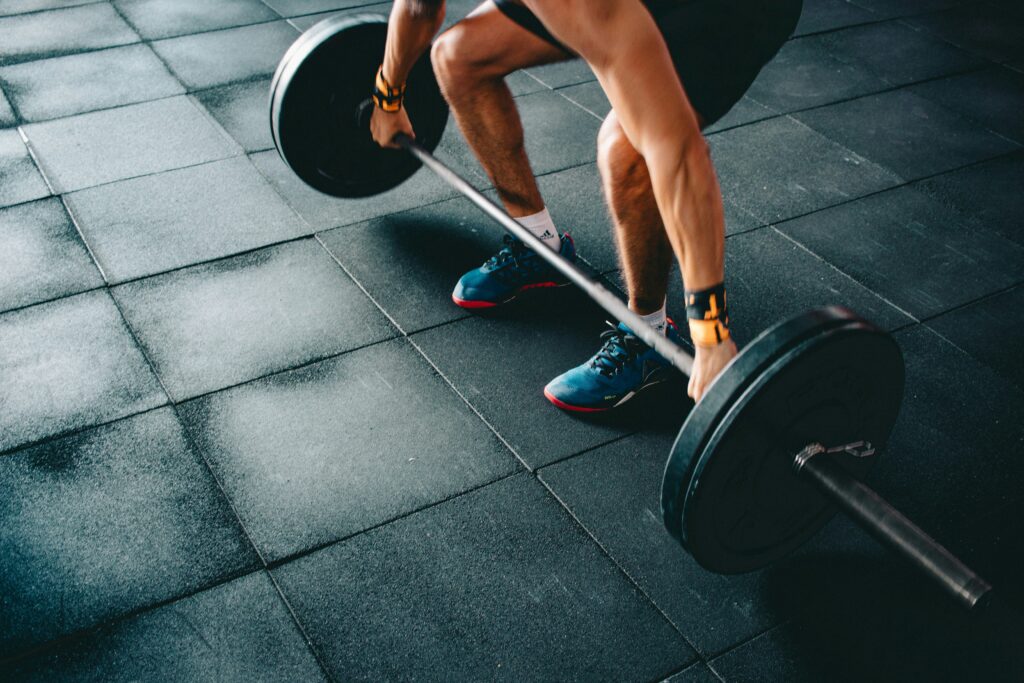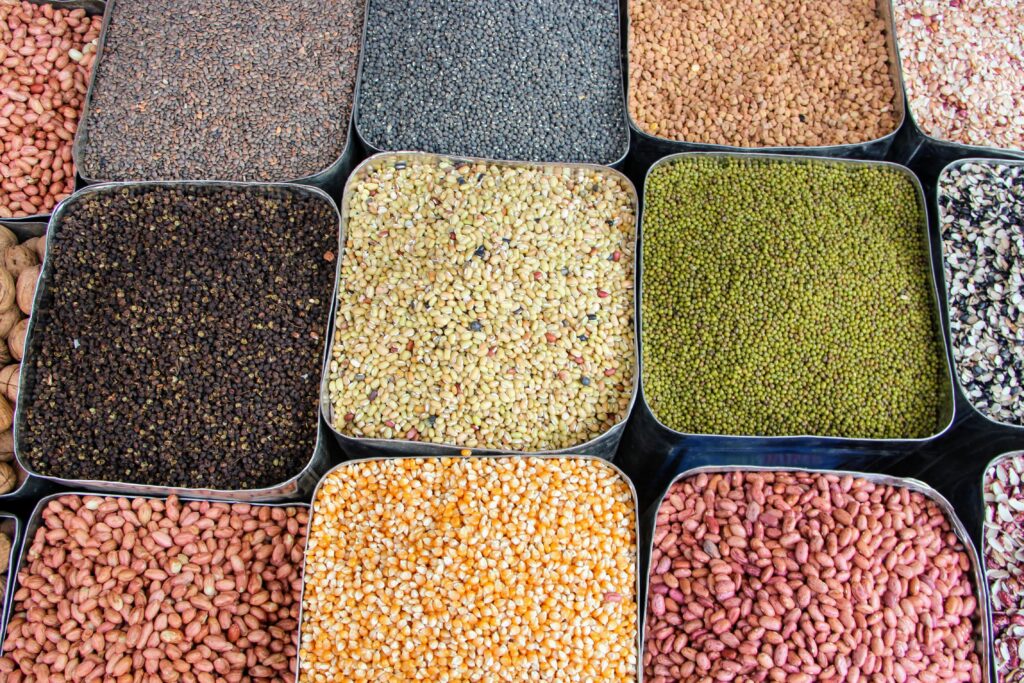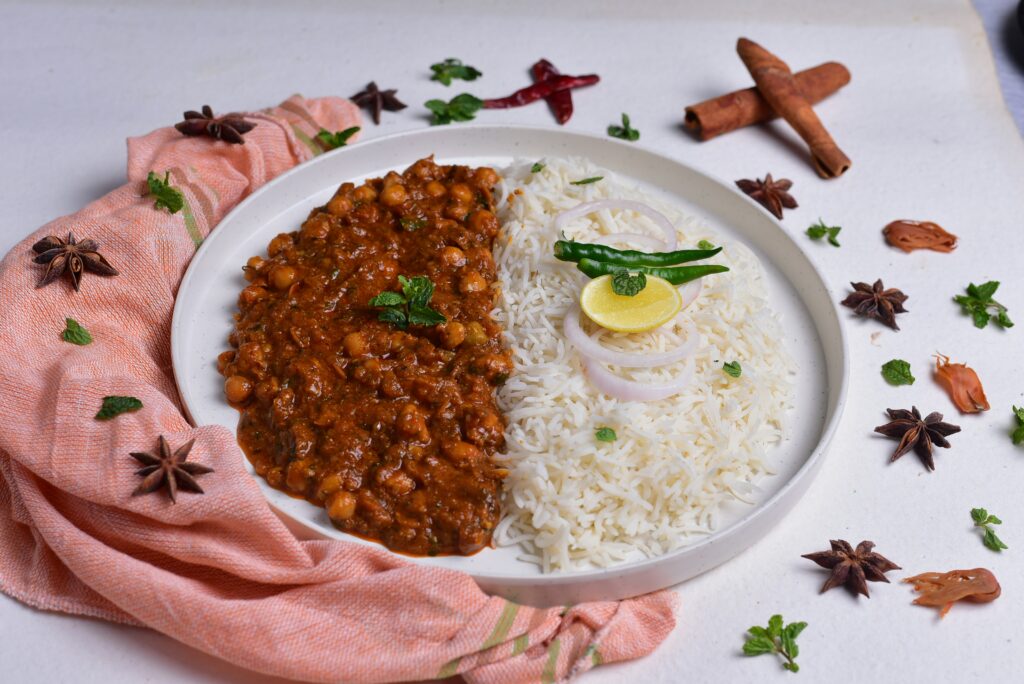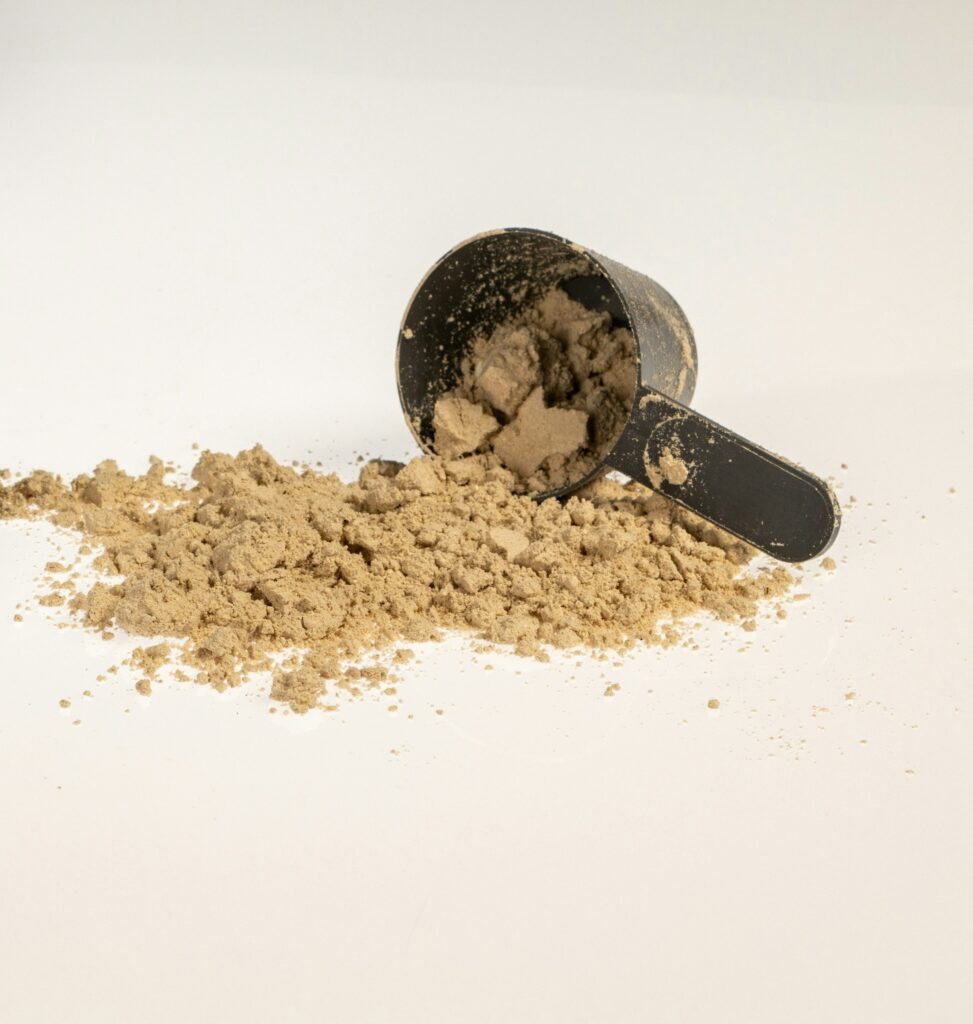One of the most common concerns about plant-based diets is protein. People often wonder: “Can you really get enough protein without meat, eggs, or dairy?” In this high-protein vegan diet we see what is true. And,
The answer is a clear yes — as long as your diet is balanced and intentional.
In this guide, we’ll explore how to get high-quality protein on a vegan diet, the best plant-based sources, and tips to help you thrive — whether you’re active, building muscle, or just aiming to eat healthier.
1. Why Protein Matters (High-protein vegan diet)
Protein plays a vital role in your body. It helps:
- Build and repair muscle tissue
- Support immune function
- Produce enzymes and hormones
- Keep you full and energized
Not getting enough can lead to fatigue, muscle loss, and slowed recovery — but with a well-planned vegan diet, that’s easily avoidable.
2. How Much Protein Do You Need? (High-protein vegan diet)
Protein needs vary based on your body and lifestyle:
The minimum recommended protein intake is about 0.8 grams per kilogram of body weight, while the upper limit is around 2.5 grams per kilogram per day. However, 2.5 g/kg is considered quite high for most people. Generally, a common guideline is to consume approximately 1 gram of protein per kilogram of body weight. It’s important to note that protein needs vary depending on a person’s level of physical activity. Different types of individuals have different protein requirements.

Photo by Victor Freitas on Unsplash

Photo by Glenn Carstens-Peters on Unsplash
| Type of Person | Recommended Intake |
|---|---|
| Average adult | 0.8g per kg of body weight (~50–60g/day) |
| Active/athletes | 1.2–2.0g per kg (~70–120g/day) |
| Weight gain/muscle building | 1.6–2.2g per kg (~90–130g/day) |
💡 Example: If you weigh 60 kg and are moderately active, aim for around 75–100g of protein daily.
3. How much protein in our food?
Vegan high-protein foods, showing their approximate protein content per standard amount:

Photo by Yoav Farhi on Unsplash
| Food Item | Quantity | Protein Content (Approx.) |
|---|---|---|
| Black Chickpeas (Kala Chana) | 100g (dry) | 20g |
| Mixed Pulses / Dal | 100g (dry) | 22–24g |
| Kidney Beans (Rajma) | 100g (dry) | 24g |
| Peanuts | 100g | 26g |
| Tofu | 100g | 8–12g |
| Soya Chunks | 100g (dry) | 50–54g |
| Soy Milk (unsweetened) | 1 cup (240ml) | 6–10g |
| Tempeh | 100g | 18–20g |
| Peanut Butter | 2 tbsp (32g) | 8g |
| Almonds | 8 almonds (approx.) | 3g |
| Whole Wheat Flour (Atta) | 100g (≈ 3–4 chapatis) | 10g |
| Quinoa (cooked) | 100g | 4g |
| Quinoa (uncooked) | 100g | 14–16.5g |
| Edamame (boiled) | 100g | 10g |
| Chia Seeds | 2 tbsp (28g) | 3g |
| Flax Seeds | 2 tbsp (28g) | 3g |
| Other Nuts & Seeds | 28g (1 oz) | 2–6g |
Protein Content in Some Non-Vegetarian Foods
| Food Item | Protein (per 100g) | Hindi Name (हिंदी में) |
|---|---|---|
| Egg (boiled) | 13 g | अंडा (उबला हुआ) |
| Chicken (cooked) | 27 g | चिकन (पका हुआ) |
| Chicken Breast | 31 g | चिकन ब्रेस्ट (छाती का मांस) |
USDA FoodData Central. Boiled Egg. Link
USDA FoodData Central. Chicken Breast. Link
Firstly, we can see that there isn’t a significant difference in protein quantity—**for example, peanuts contain around 26g of protein per 100g, while chicken contains about 27g per 100g. However, eating the same quantity of vegetarian foods like pulses and peanuts may cause bloating, as they are more fibrous and filling. On the other hand, eating a large amount of chicken can feel heavy. This shows that vegan foods can provide a same amount of protein as non-vegetarian foods.
4. How to complete all amino acids?
One common myth is that plant proteins are “incomplete” — meaning they don’t contain all nine essential amino acids in the right proportions. While it’s true that most individual plant foods don’t offer a complete profile, you don’t need every meal to be complete.
What Actually Matters:
This natural “protein combining” ensures that you still get all the essential amino acids — just not always in a single food.
When you eat a variety of plant-based protein sources throughout the day, your body combines the amino acids from different foods.

Photo by PRATEEK JAISWAL on Unsplash
Examples of Effective Combinations:
| Food Combo | Complete Amino Acid Profile? |
|---|---|
| Rice + Lentils/Dal | ✅ Yes |
| Whole wheat roti + Chickpeas | ✅ Yes |
| Peanut butter + Whole grain bread | ✅ Yes |
| Tofu + Brown rice | ✅ Yes |
| Hummus + Pita bread | ✅ Yes |
| Oats + Soy milk | ✅ Yes |
These combinations — even when eaten at different times of the day — allow your body to pool amino acids and build complete proteins as needed. Even vegetables and fruits contain amino acids. You don’t always need to perfectly combine foods in every meal. For example, if you eat only whole wheat chapati with seasonal cooked vegetables in one meal, you can balance it later with legumes like moong dal dosa, besan cheela, rajma, or peanuts.
Culturally and traditionally, we already eat many of these combinations. That’s why, for better health, it’s recommended to include a variety of foods throughout the day — such as seasonal grains, lentils, kidney beans (rajma), chickpeas (chole), fruits, vegetables, seeds, nuts, dry fruits, and probiotics.
Your Body is Smart
Your body maintains an amino acid “bank” and draws from it to build complete proteins when needed. So, if you eat varied plant foods throughout the day (like grains, legumes, nuts, seeds, and veggies), you’re covered.
Bottom Line:
A balanced plant-based diet with variety provides all essential amino acids — no need to stress about “complete proteins” in every meal.
5. How to Build a High-Protein Vegan Plate
To meet your protein and other nutrient needs, it’s important to include a variety of foods in your diet and rotate them regularly. This ensures you get all essential amino acids and sufficient micronutrients.
Sample High-Protein Vegan Meal Plan
A.
Breakfast
- 50 g moong dal (soaked overnight)
- 8 soaked almonds (mostly Indian variety, occasionally California almonds)
- 1 tsp chia seeds
- 1 tsp flax (alsi) seeds
Total protein:
Moong dal (12g) + Almonds (3g) + Chia seeds (1g) + Flax seeds (1g) = 17g protein
Also provides healthy fats, fiber, and essential micronutrients.
Tip: Occasionally use sprouted moong dal for added nutritional benefits.
Lunch
(Taken around 3 hours after breakfast or when hungry)
- 3 to 4 whole grain chapatis or rice (or other grains like millet, quinoa, etc.)
- 50 g of another pulse (e.g., rajma, chana, masoor dal), soaked overnight and properly cooked
- Seasonal vegetable (any available)
Approximate protein content:
Grains (9–12g) + Pulse (12g) + Vegetables (~1g, mainly for vitamins/minerals) = 22–25g protein
Snack
(When feeling hungry between meals)
- 50 g roasted peanuts
- 40 g roasted chickpeas (bhuna chana)
- A dash of lemon and a pinch of salt
Protein:
Peanuts (13g) + Chickpeas (8g) = 21g protein
Alternative snacks:
- Peanut butter on whole grain bread
- Seasonal fruits (great for vitamins, minerals, and fiber)
- Optional: Include fruit with breakfast or snack time
Dinner
- 2 chapatis (or another grain like ragi or bajra)
- 50 g tofu or tempeh, or any other cooked lentil
- Pickle
Protein estimate: 15–20g protein
Total Daily Protein Intake:
- Breakfast: 17g
- Lunch: 22–25g
- Snack: 21g
- Dinner: 15–20g
➡️ Total: ~76–83g protein per day
Note:
This is my personal summer diet plan since I started working out at the gym. My weight was around 53–54 kg, and my goal is to gain muscle and healthy weight. Based on my activity level, I aim for around 80g of protein daily, along with sufficient carbs, fats, and micronutrients. I always change after some weeks.
If you work out 5 days a week, this plant-based protein intake is generally sufficient and well-digested. However, this diet is not recommended for individuals who do not engage in weight training or heavy physical exercise, as their protein requirements will be lower.

B.
High-Protein Vegetarian Full-Day Meal Plan (~70g Protein)
🔹 Breakfast:
- 1 banana
- 50g soaked peanuts
- 2 tsp soaked flax seeds
- 1 tsp chia seeds
- 8 soaked almonds
- A small piece of ginger and a pinch of cumin for better digestion
✅ Approx. Protein: 13g (peanuts) + 2g (almonds) + 1g (chia) + 2g (flax) = 18g
🔹 Lunch:
- Any seasonal grain (wheat, rice, ragi, bajra, etc.)
- Any pulse (like moong, urad, toor, chana dal, etc.)
- Cooked seasonal vegetables
- Raw salad
✅ Approx. Protein: 10g (grain) + 12g (dal/pulse) + 1g (vegetables) = 23g
🔹 Snack Options (Choose 1–2):
- Roasted chickpeas (bhuna chana)
- Boiled black chickpeas mixed with chopped vegetables and spices
- Makhana with peanut butter
- Fruit or dry fruits like soaked cashews, walnuts, dates, and raisins
- Paratha with nut butter (like peanut or almond)
✅ Approx. Protein: 16–17g (depending on choice and quantity)
🔹 Dinner:
- Tempeh or tofu (light portion)
- Rice, millet, or pulao
- Legume curry or stir-fry
✅ Approx. Protein: 13–14g
✅ Total Daily Protein: ~70g
This plan is ideal for individuals with moderate physical activity. By combining a variety of grains, pulses, legumes, soy products (tofu/tempeh), nuts, seeds, fruits, and vegetables, you can meet your daily protein needs naturally — even without supplements.
For better digestion and taste, rotate recipes like soups, curries, gravies, and stir-fries using these ingredients. This approach not only supports overall health and fitness but also promotes lean muscle development over time through consistent, balanced nutrition. While the results may take time, they are sustainable and long-lasting. Make sure to stay hydrated by drinking enough water daily, as proper hydration is essential for digestion, nutrient absorption, and overall performance.
SUPPLEMENTS
Protein supplements aren’t always necessary — especially if you’re already meeting your daily needs through a balanced diet. However, they can be extremely helpful in certain situations, such as when your protein requirements are higher than average or when you’re aiming for specific fitness goals like muscle gain, fat loss, or improved athletic performance. In today’s world, if someone needs more protein (more than 100g normally not for everyone) , supplements often become essential. Plant-based protein powders are a better option compared to whey or casein, as they are sustainable and cruelty-free. If you can afford them, they are worth buying — but be mindful, because eating meat is not just harmful to animals, it also contributes to human problems like rising global heat and climate change.
If you have the money, investing in supplements is a wise choice, especially if your diet lacks adequate protein. For example, instead of spending on eggs or milk, that money could go toward a good protein supplement. Vegetarian foods often provide more calories than protein, so supplements can help balance nutrition.
There are mainly three types of plant protein:
- Soy protein, which is not suitable for some people.
- Pea protein, which does not provide a complete protein profile.
- Pea + rice protein, which is suitable for everyone and contains a complete amino acid profile.
Millions of people cannot even afford basic nutritious food, leading to widespread deficiencies. The real solution lies in creating awareness, demanding change, and bringing a revolution. The question we should ask our government is: why are so many normal people still so poor and unable to fulfill their basic nutritional needs?

Photo by Aleksander Saks on Unsplash
For example, if you’re looking to build significant muscle mass, achieve a lean, defined physique (with minimal carbs), or take your body to the next level — supplements can help fill the gap.
Rather than using animal-based proteins like whey or casein, choose plant-based protein supplements made from sources like pea, rice, hemp, or soy. These are equally effective and align with a vegetarian or vegan lifestyle.
You may benefit from protein supplements if:
- You’re an athlete or active individual with increased protein needs
- You’re short on time and can’t prepare multiple high-protein meals daily
- You struggle to eat enough calories or protein through whole foods alone
- You’re aiming for more muscle definition without increasing carb intake
In such cases, protein powders, bars, or ready-to-drink shakes can be convenient tools — just ensure they come from clean, high-quality plant-based sources. Always get enough knowledge about brand.
✅ Key Tips for a High-Protein Vegan Diet
- Eat a variety of plant proteins daily. Eating a mix of plant-based proteins throughout the day helps ensure you get all the essential amino acids.
- Plan ahead to balance your meals and snacks. Plan once and focus on your day—your work is more important than spending the entire day thinking about food and protein.
- Pair proteins smartly. Combine foods like beans with rice or hummus with whole grain bread to make your meals more nutritious and complete.
- Track your intake if you’re unsure about meeting your protein needs. At the end of the day, review how much protein you’ve consumed.
- Don’t forget other nutrients. They matter too—eat plenty of fruits and vegetables to get essential vitamins, minerals, and antioxidants.
There are many athletes and players who follow a vegan diet and excel in their fields, so never think that plant-based food is weak or lacking in nutrients. In fact, many Olympic medalists and professional wrestlers are also vegan. Some well-known examples include:
- Venus Williams – Olympic gold medalist & professional tennis champion
Carl Lewis – 9-time Olympic gold medalist in sprinting and long jump
Kendrick Farris – U.S. Olympic weightlifter (competed in 2008, 2012, 2016)
David Haye – Former world heavyweight boxing champion
Patrick Baboumian – Record-holding strongman and vegan advocate
Cam Newton – NFL quarterback (not officially vegan, but has followed a plant-based diet at times)
Dotsie Bausch – Olympic silver medalist cyclist, vegan activist
Tia Blanco – Professional surfer and gold medalist at the ISA World Surfing Games
These athletes prove that vegan nutrition can support high performance, strength, endurance, and recovery at the highest levels of competition.
Final Thoughts
A high-protein vegan diet isn’t just possible — it’s healthy, energizing, and sustainable. With a bit of knowledge and planning, you can fuel your body, build strength, and thrive on plants.
Remember: it’s not about perfection. It’s about progress and choosing foods that nourish you — and the planet. you save so many animals just change or replace your food and please share.
FAQs: High-Protein Vegan Diet
1. Can you get enough protein on a vegan diet?
Yes, absolutely! A well-planned vegan diet can provide all the protein your body needs. By combining a variety of legumes, whole grains, nuts, seeds, and soy products, you can easily meet your daily protein requirements.
2. What are the best high-protein vegan foods?
Some of the best plant-based protein sources include:
- Lentils and pulses (dal)
- Chickpeas and kidney beans
- Soya chunks and tofu
- Tempeh and edamame
- Quinoa and oats
- Peanuts, peanut butter, almonds, and other nuts
- Chia seeds and flax seeds
3. How much protein do I need per day?
The general recommendation is:
- 0.8g per kg of body weight for sedentary individuals
- 1.2–2.0g per kg for active people or those looking to build muscle
- Very active individuals or athletes may need up to 2.5g per kg, but this is considered the upper limit for most.
4. Do plant proteins contain all essential amino acids?
Most individual plant foods are not complete proteins, but by eating a variety of them (like rice with beans, or lentils with whole grains), you can get all essential amino acids throughout the day.
5. Can a vegan high-protein diet support muscle gain?
Yes! Many vegan athletes and bodybuilders thrive on high-protein plant-based diets. As long as your overall calorie and protein intake meets your goals, muscle gain is absolutely possible.
6. Will eating a lot of legumes and nuts cause bloating?
Some people may experience bloating, especially when increasing fiber-rich foods suddenly. To reduce discomfort:
- Soak and cook legumes properly
- Gradually increase fiber intake
- Drink plenty of water
- Include fermented foods like tempeh or sauerkraut
7. What are some quick high-protein vegan snacks?
- Roasted chickpeas
- Trail mix with nuts and seeds
- Peanut or almond butter on whole-grain toast
- Vegan protein bars or smoothies
- Edamame or soya nuts
8. Is it okay to eat the same meals every day for protein?
While repeating meals is fine occasionally, it’s best to rotate your foods to avoid nutrient gaps and boredom. Variety ensures you get a wider range of vitamins, minerals, and amino acids.

